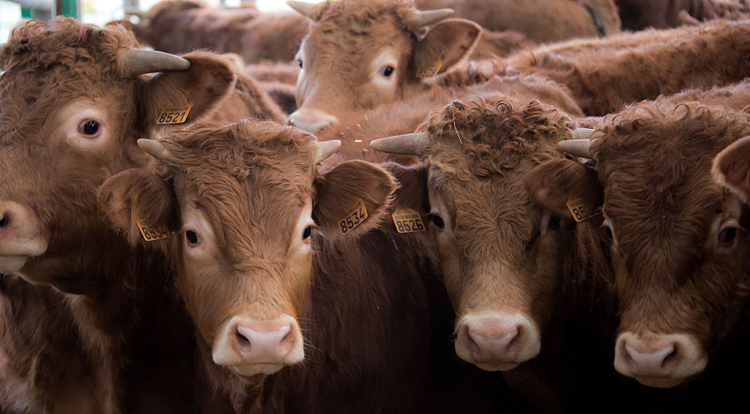Farmers are seeing steadily falling prices for beef cattle – but consumers haven’t seen any relief at the meat counter, yet.

Canadian farmers started to see much higher sale prices for beef cattle starting in October 2013, as American beef operations, hit by a severe drought, crossed the border to buy cattle to rebuild their herds.
Before that point, it was unusual for beef cattle to be sold in Alberta for much more than $100 per hundred pounds.
The price hike was profitable for farmers, but drove up prices for consumers.
READ MORE: A hog, a year and 5.3 Canadians: Our appetite for animal products, by the numbers
Beef cattle prices peaked in Alberta in May of 2015 at their highest point in this century. $191.30 per hundred pounds, and have been falling since then. In July, they were down to $139.51.
That time lag reflects the long time, 18 months to two years, that it takes to rebuild a herd of beef cattle, explains Dalhousie University business professor Sylvain Charlebois.
For consumers, though, beef prices have stayed high. A kilogram of round steak, for example, cost $18.39 in July, not much lower than the $19.12 it cost in July of 2015 and still higher than the $16.36 of July, 2014.
So when will we see some lower-priced steak?
“The question everyone is asking right now is how low the market can go,” explains Brenna Grant, an analyst at Canfax, a market information division of the Canadian Cattlemen’s Association.
WATCH: Effective today, all beef on Earls menus in Alberta and Saskatchewan is 100 per cent Canadian. But what about other restaurants in Canada? Quinn Ohler finds out.

“The retailer wants to be confident that those prices are not only going to decline, but they’re going to stay lower. It’s difficult to raise prices – consumers are very price-sensitive.”
“But we are definitely expecting prices to come down over the next six months.”
Beef prices crashed in 2003 because of mad cow disease, Charlebois points out, but very little of that was passed on to the consumer.
“In 2003, farm gate prices went down 70 per cent overnight,” he says. “There was an instant oversupply of beef in the Canadian marketplace, and retail prices barely moved.”
“Farm gate prices rarely couple with retail prices.”


Comments